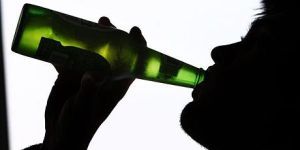CDC: US Has a Binge Drinking Problem
Over 38 million adults in the United States engage in binge drinking, many more than previously thought, according to a report released today by the Centers for Disease Control and Prevention.

Over 38 million adults in the United States engage in binge drinking, many more than previously thought, according to a report released today by the Centers for Disease Control and Prevention (CDC).
The risky behavior, which the CDC defines as consuming five or more alcoholic drinks on a single occasion for men, or four or more drinks for women, is most common in those between the ages of 18 and 34, who log approximately four binge drinking episodes per month. However, those over the age of 65 who binge drink do so even more often—five to six times per month on average.
The activity significantly increases one’s risk of hurting oneself or others through car crashes, violent acts, and suicide. Each year, 80,000 deaths in the US are attributed to excessive drinking, including binge drinking.
“It is alarming that binge drinkers are consuming so much alcohol with such regularity,” said CDC Alcohol Program Leader Robert Brewer, MD, in a press release. “The risk to their lives can be reduced.”
In preparing the report, CDC researchers assessed data on self-reported binge drinking collected via telephone interviews with 457,677 US adults aged 18 and older over a 30-day period in 2010.
The percentage of adults engaging in binge drinking ranged from 10.9% in Utah to 25.6% in Wisconsin. Wisconsin also led the country in the largest number of drinks on a single occasion over the 30-day period with an average of nine. In general, the highest binge drinking rates were found in the Midwest, New England, the District of Columbia, Alaska, and Hawaii.
Binge drinking patterns were also found to vary by income level. Those with household incomes over $75,000 engaged in the practice most frequently, while those with household incomes under $25,000 averaged the most drinks per episode.
The report notes that most people who binge drink are not alcoholic or dependent on alcohol, but over 50% of alcohol consumption in adults occurs while binge drinking. This percentage is even higher in youths: 90%.
The report also details the negative health effects of binge drinking, including increased risk of car accidents, infection with HIV and other sexually transmitted diseases, unplanned pregnancy, fetal alcohol syndrome disorders, liver disease, certain cancers, heart disease, and alcohol dependence. The risk of death from alcohol poisoning also rises significantly for those who binge drink more frequently and consume more drinks during this process.
In addition, the report points out that binge drinking cost federal, state, and local governments an average of $746 per person, or $1.90 a drink, in the US in 2006. These costs included health care expenses, crime, and lost productivity.
“Binge drinking causes a wide range of health, social, and economic problems, and this report confirms the problem is really widespread,” said CDC Director Thomas R. Frieden, MD, MPH, in the press release. “We need to work together to implement proven measures to reduce binge drinking at national, state, and community levels.”